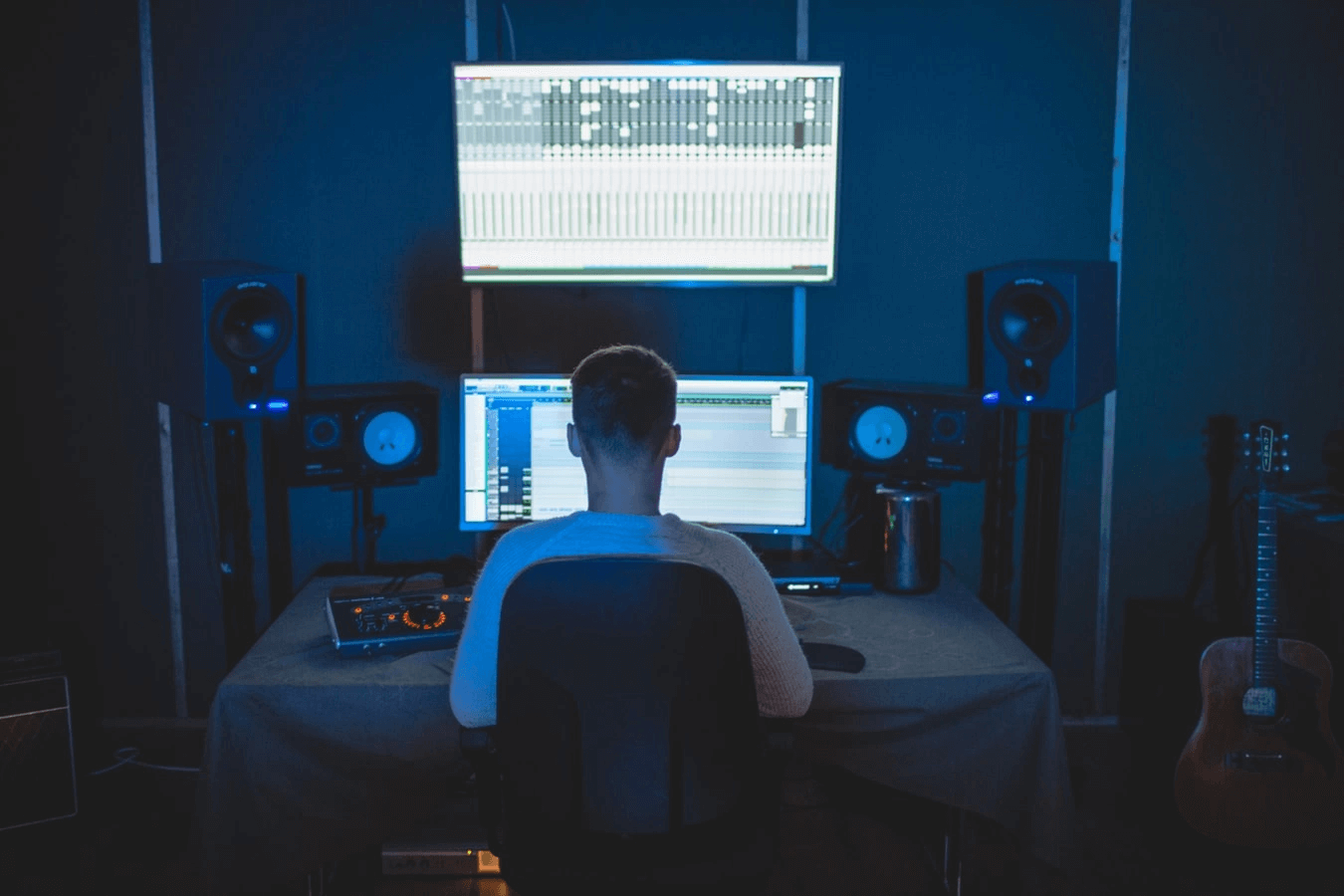How To Improve Room Acoustics In Your Home Studio
Young producers who are just getting started with home recording have grossly underestimated the importance of their home studio’s acoustic quality. They assume that their studio monitors and condenser microphone will do the job.
There is a thing to understand why the Acoustic Quality of your home studio can significantly improve the quality of the production and final output. Before we start to walk you through the reasons why the acoustic quality of your home studio must be improved, and the detailed process to design a very useful acoustic treatment setup for your home studio; first, let us explain what Acoustics and Acoustic Quality mean.

Studio acoustics talks about the principles of how sound works in a closed room. It looks at things you need to do technically to control the sound waves within your recording environment. On the other hand, Acoustic Quality has to do with the quality of the sound waves in an enclosed room.
How to improve your home studio’s acoustic quality?
We all know how to make everything happen in a home studio, how to record, write, produce, mix, & master inside one room. But what most don’t know is how to get the best acoustic quality out of the small-sized home studio.
Different room-sized recording studios have a different acoustic requirement. The requirements vary due to different room sizes and arrangement. So we are going to be looking at how to get the best acoustic quality out of a room-sized studio.

You can improve your home studio’s acoustic quality with the following solutions
Using “mattress” in your vocal booth:
A very good & thick old mattress is the most cost-effective natural sound absorber you can get in your home, better than pillows and thick blankets, even when used together.
The best and most popular DIY method to improve your sound quality when recording is to firmly place an old mattress against your wall directly behind the singer/recording artist’s back. Using mattress is an old method that has been tested and certified by experienced professionals who have tried the method a couple of times in their early recording days.
You, however, have to strictly adhere to the following to make the technique work strictly, they are:
You must use a heavy and thick enough mattress to get the best quality. A light mattress is not ideal.
Taking care of bass
Every enclosed room has a bass resonance that is mostly too low. Besides, This will require you to get quality materials to improve the bass quality, which will overall take care of your recording studio’s acoustic quality.
To take care of your studio low bass resonance, you need incredibly thick materials, & good bass traps.
There are different kinds of bass traps based on the frequency range produced. Some are bulky because they work with sound-absorbing materials and are quite effective over a broad range of frequencies.
Other kinds of bass traps work with materials that resonate on a particular bass frequency. They are only effective in narrow frequency range, which must be manually controlled from time to time.
Planning
You will want to make sure it is set up in the right places in the studio, to optimize its acoustic performance.
It is essential to take your time and think of creative ideas of how they will be set up, or you don’t want your work to look like something made by a 2-year-old. Make sure that you get the accurate dimension of the spaces on the wall the acoustic wares will be installed. Also, at the same time, get the best type of glue that will do a perfect job.
All of these requires proper planning, and you have to take your time on it.
Using Reflection Filters
As a young producer or recording artist, getting an original and quality acoustic foam can be a little expensive, probably over your budget. Also, consider the fact that using a mattress might take the space or make your studio look ugly or just too ghetto-looking for artists to come to you. Your best bet is a reflection layer, which has been tested and trusted by many studio owners to be a very practical solution.
How they work is that they absorb the sound reflections around your mic, before entering the room, rather than absorbing the reflections scattered around the room. The Reflection filters are in the form of a semi-circled absorption panel mounted to your mic, which wraps neatly around the mic. They are not the best and most effective ways to solve the problem of room acoustics, but produce quality output and are cost-effective compared to setting up an acoustic foam in your studio.
Speaker Isolation
Another right way to improve the acoustic quality of what you produce in your room studio is by isolating the speakers in strategic positions. You first of a need to arrange your speakers on stands in specific areas in the studio, the positioning of the speakers will help improve the sound frequency and vibrations in places in the studio with low-end frequency. What all these grammar means is that: by arranging your speakers in strategic positions, you’ll get equal sound output from every angle of the room.
First, the frequency response of the room (the level of certain frequencies at different locations in the room) is measured. This is done by playing test tones into the room, which are recorded with a microphone.
Are you planning to build a home recording studio? Call us at Acoustica Projects now, or schedule a virtual meeting with us!
Call us 1300 498 268
Email us – enquires@acousticaprojects.com.au
Website – https://acousticaprojects.com.au/
